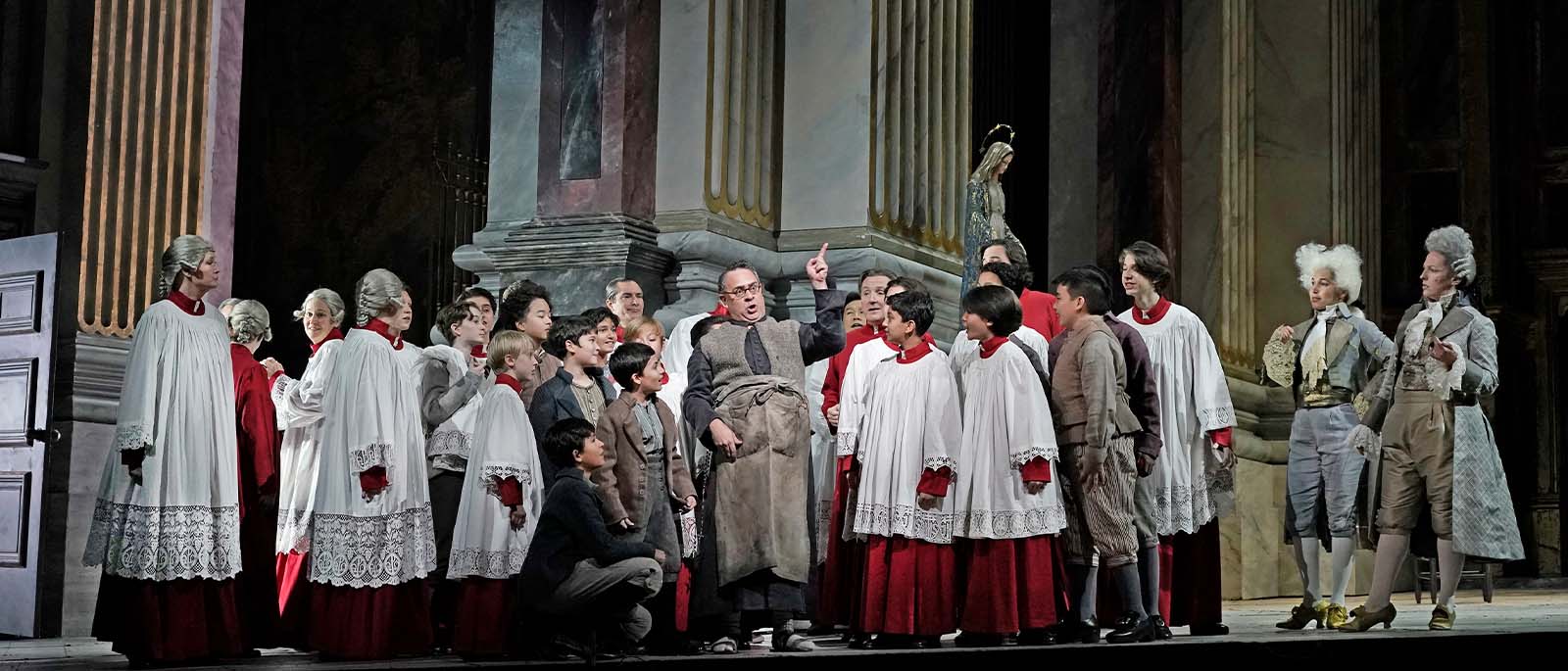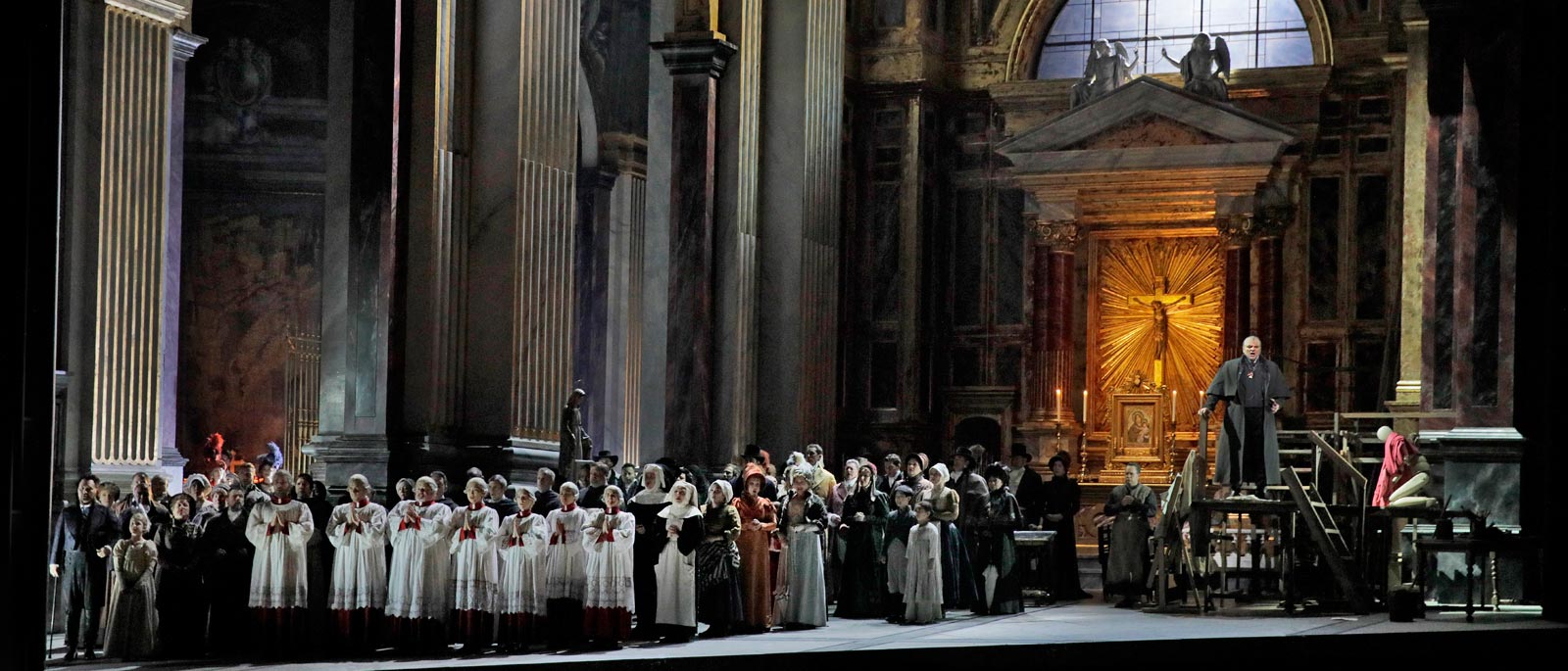
Giacomo Puccini
Tosca
Upcoming Performances
Overview
Three thrilling leading ladies trade off as the volatile diva Floria Tosca. First, soprano Aleksandra Kurzak reprises her riveting portrayal of the title role, starring alongside tenor SeokJong Baek as her revolutionary lover, Cavaradossi, and baritone George Gagnidze as the sadistic chief of police Scarpia. Later in the season, the extraordinary Lise Davidsen sings Tosca for her first time at the Met, alongside tenor Freddie De Tommaso in his eagerly anticipated company debut and powerhouse baritone Quinn Kelsey. And in the winter, soprano Sondra Radvanovsky and tenor Brian Jagde reunite following their acclaimed 2021 performances of the lead pair, joining forces with legendary bass-baritone Bryn Terfel, who returns to the Met after more than a decade. Maestro Xian Zhang conducts.
Please note that video cameras will be in operation during the Nov 19 and Nov 23 performances as part of the Met’s Live in HD series of cinema transmissions.
Production a gift of Jacqueline Desmarais, in memory of Paul G. Desmarais Sr; The Paiko Foundation; and Dr. Elena Prokupets, in memory of her late husband, Rudy Prokupets
Major support from Rolex
The Met gratefully acknowledges the support of the Gramma Fisher Foundation, Marshalltown, Iowa
Revival a gift of The Joseph and Robert Cornell Memorial Foundation, Mastercard, and Rolex
Languages
Languages sung in Tosca
Sung In
Italian
Titles
Title languages displayed for Tosca
Met Titles In
- English
- German
- Spanish
- Italian
Timeline
Timeline for the show, Tosca
Estimated Run Time
3 hrs 5 mins
-
House Opens
-
Act I
50 mins
-
Intermission
30 mins
-
Act II
45 mins
-
Intermission
30 mins
-
Act III
30 mins
-
Opera Ends
Cast
Select a date from the dropdown to filter cast by date of performance
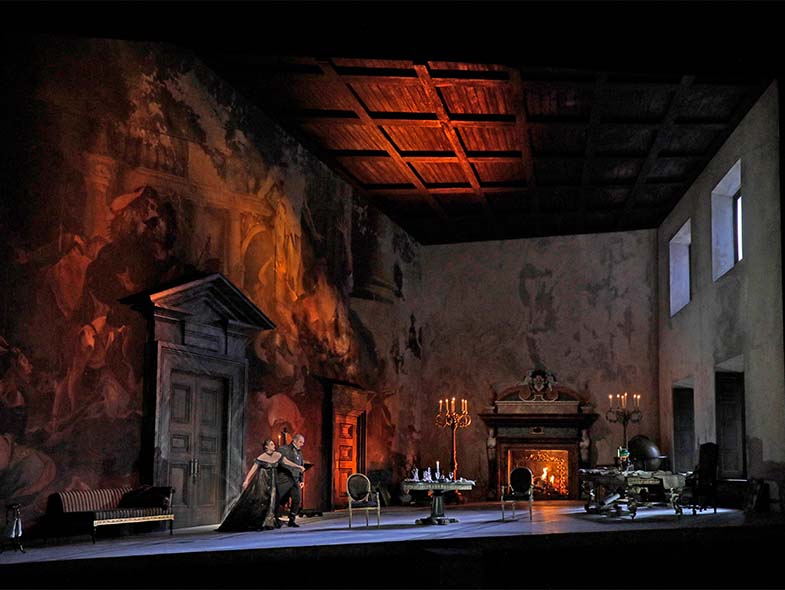
Premiere: Teatro Costanzi, Rome, 1900. Puccini’s melodrama about a volatile diva, a sadistic police chief, and an idealistic artist has offended and thrilled audiences for more than a century. Critics, for their part, have often had problems with Tosca’s rather grungy subject matter, the directness and intensity of its score, and the crowd-pleasing dramatic opportunities it provides for its lead roles. But these same aspects have made Tosca one of a handful of iconic works that seem to represent opera in the public imagination. Tosca’s popularity is further secured by a superb and exhilarating dramatic sweep, a driving score of abundant melody and theatrical shrewdness, and a career-defining title role.
Creators
Giacomo Puccini (1858–1924) was immensely popular in his own lifetime, and his mature works remain staples in the repertory of most of the world’s opera companies. His operas are celebrated for their mastery of detail, sensitivity to everyday subjects, copious melody, and economy of expression. Puccini’s librettists for Tosca, Giuseppe Giacosa (1847–1906) and Luigi Illica (1857–1919), also collaborated with him on his two other most enduringly successful operas, La Bohème and Madama Butterfly. Giacosa, a dramatist, was responsible for the stories, and Illica, a poet, worked primarily on the words themselves.
PRODUCTION
David McVicar
SET and COSTUME DESIGNER
John Macfarlane
LIGHTING DESIGNER
David Finn
MOVEMENT DIRECTOR
Leah Hausman
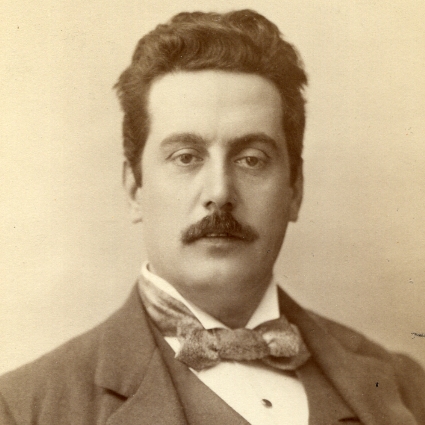
COMPOSER
Giacomo Puccini
Setting
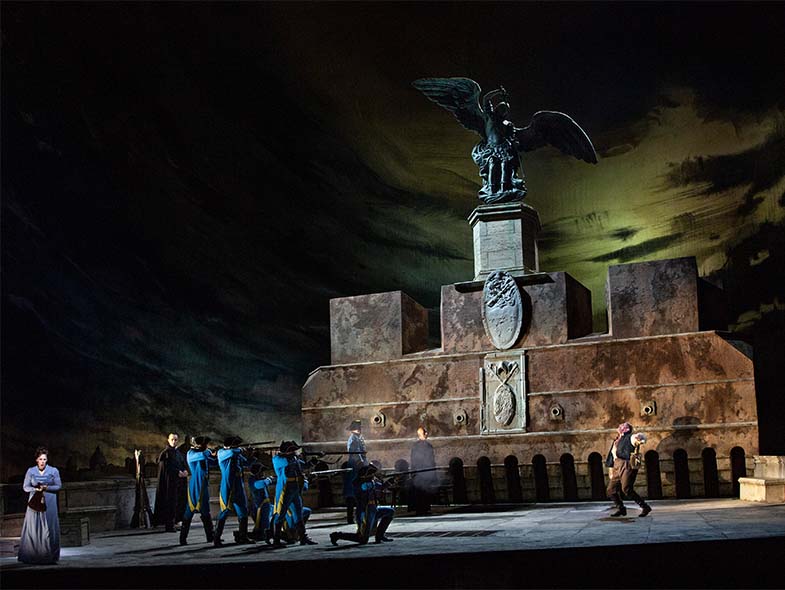
No opera is more tied to its setting than Tosca, which takes place in Rome on the morning of June 17, 1800, through dawn the following day. The specified settings for each of the three acts—the Church of Sant’Andrea della Valle, Palazzo Farnese, and Castel Sant’Angelo—are familiar monuments in the city and can still be visited today. While the libretto takes some liberties with the facts, historical issues form a basis for the opera: The people of Rome are awaiting news of the Battle of Marengo in northern Italy, which will decide the fate of their symbolically powerful city.
Music
The score of Tosca (if not the drama) itself is considered a prime example of the style of verismo, an elusive term usually translated as “realism.” The typical musical features of the verismo tradition are prominent in Tosca: short arias with an uninhibited flood of raw melody, ambient sounds that blur the distinctions between life and art, and the use of parlato—words spoken instead of sung—at moments of tension.
